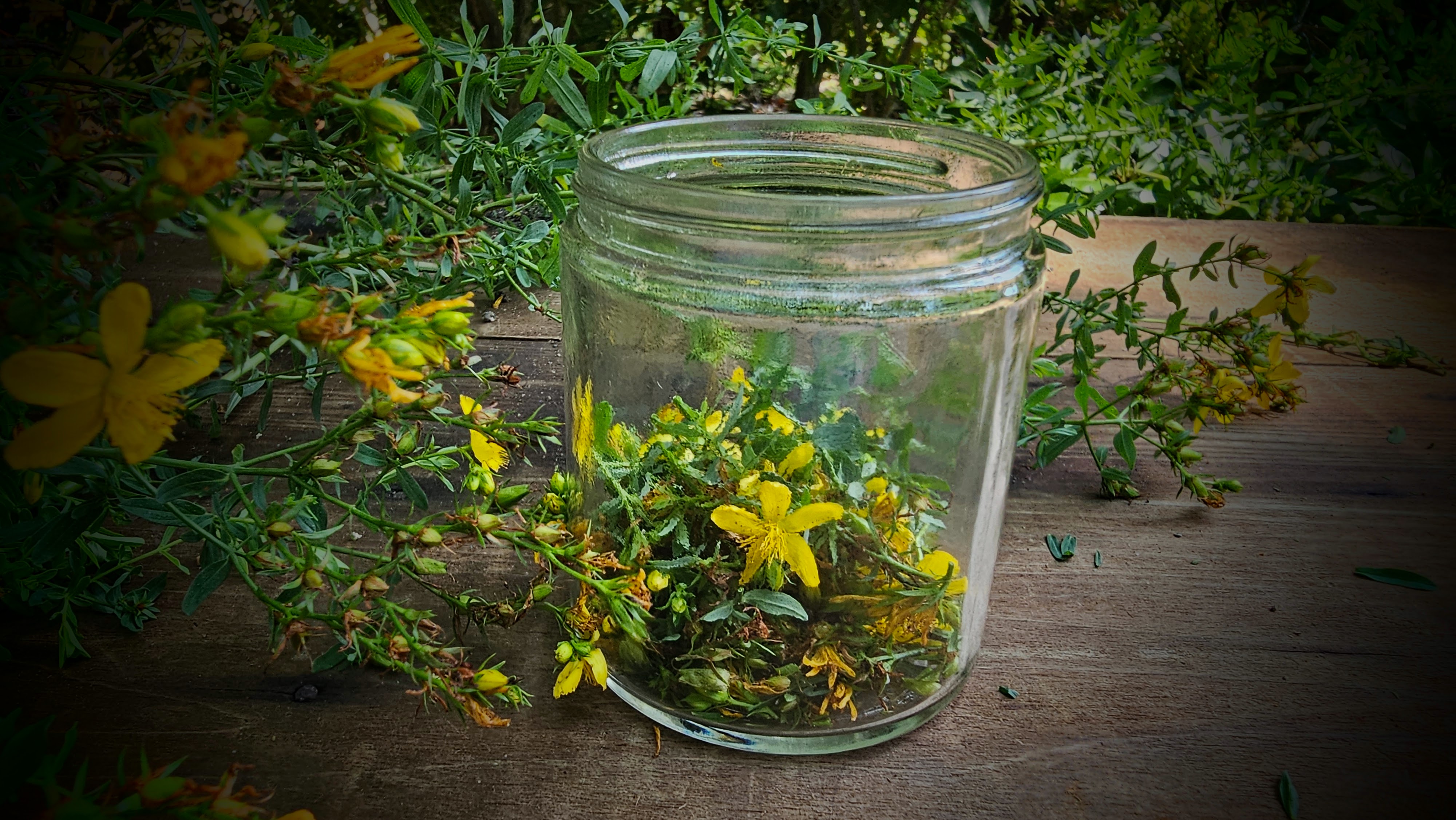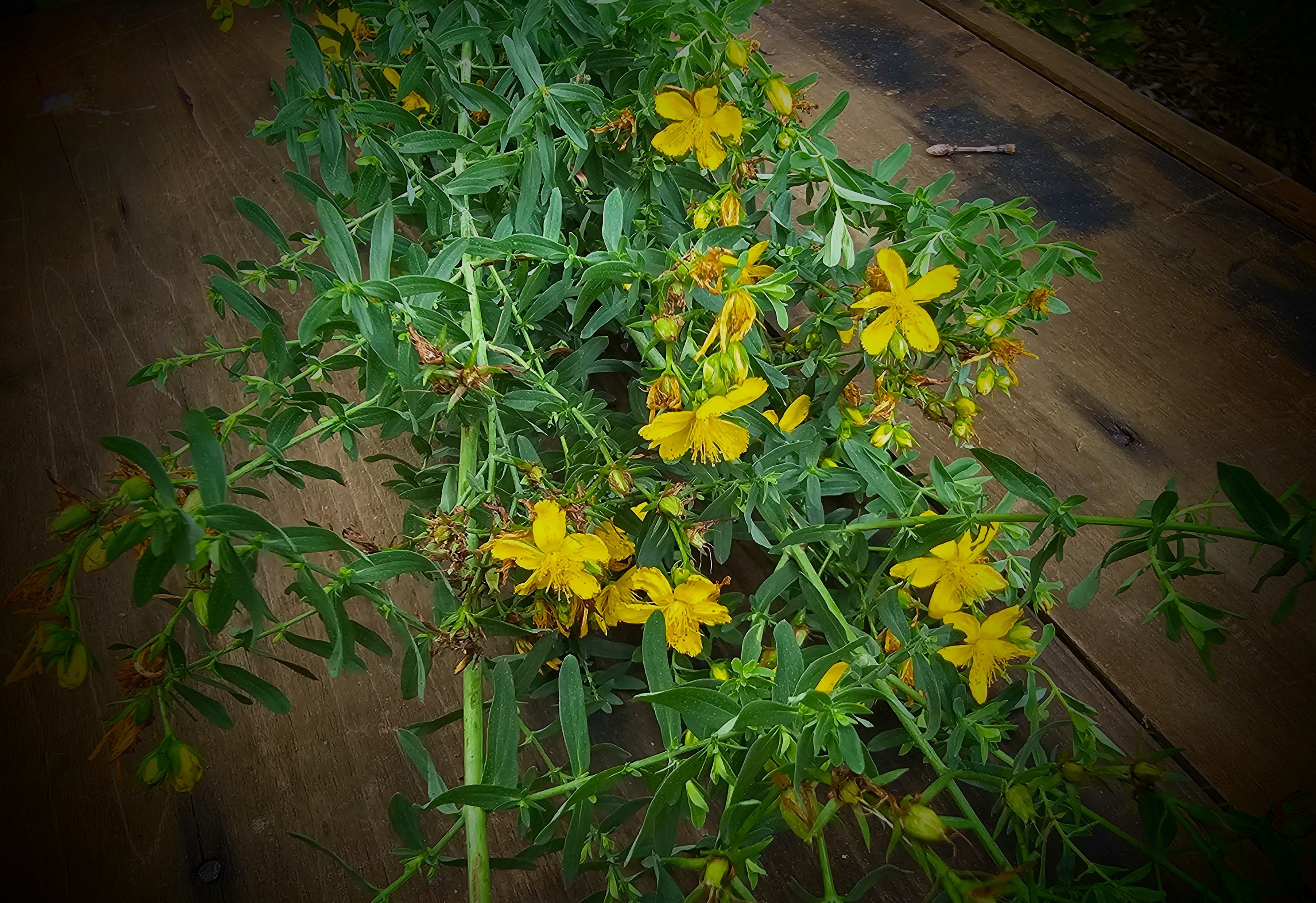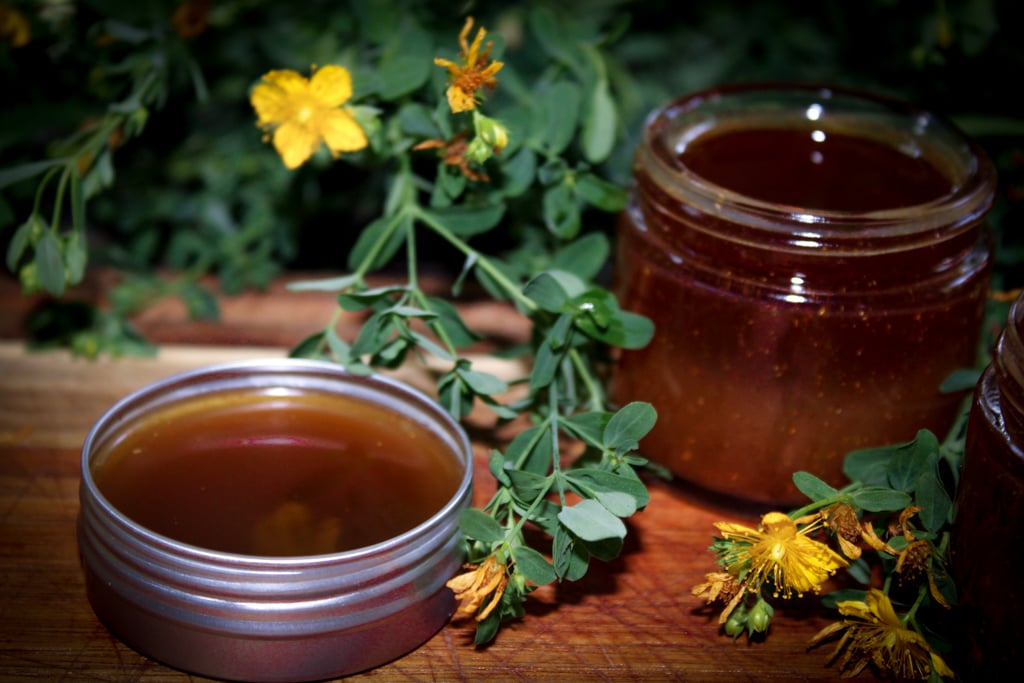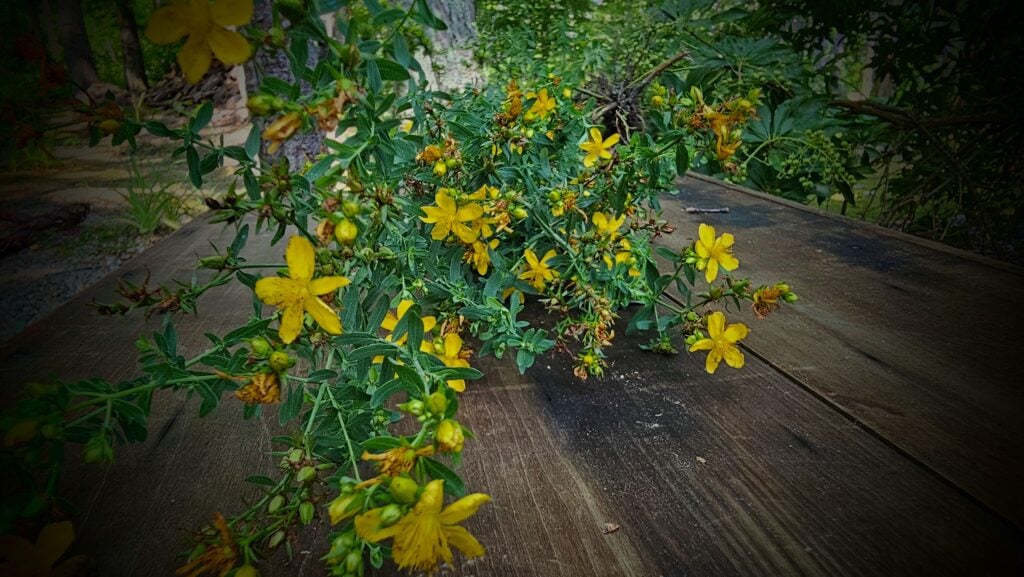The Outdoor Apothecary is reader-supported. When you buy through links on our site, we may earn an affiliate commission. Learn more

Many people want to know about the benefits, uses, and identification of Saint John’s Wort plant. This article aims to answer these and other questions about this amazing herb!
Saint John’s wort plant is an easy plant to identify and forage here in the Northeast. You can find it along roadsides, in fields, and along the edges of forests.
Lately, St. John’s Wort has been getting a lot of attention for its potential as a medicinal powerhouse, so learning to identify St. John’s Wort means you can make your own remedies at home.

How to identify St. John's wort
Hypericum perforatum, commonly known as Saint John’s wort is a perennial plant with yellow flowers and is used in both traditional European medicine and in folk herbalism. The origin of this plant dates back to its use by the ancient Greeks. The plant blooms around the feast time of St. John Baptist in late June and thereby gets its name.
Characteristics to help you identify Saint John’s wort plant:
Saint John’s wort plant is characterized by black dots on the edge of five yellow flower petals. These are often found on the leaves as well. It belongs to Hypericaceae family with average flower size of about one inch (2-2.5 cm). Flowers are bright yellow with 5 petals; leaves are usually small and opposite with 1-2 inches size. It usually grows from June to August and attains maximum height of 2 feet (60 cm).
The species name “perforatum” refers to the fact that the leaves of the plant are “perforated” or appear to have tiny pin holes –tiny oil glands — which are only visible upon close inspection.
If ever you are unsure whether you’ve found St. John’s Wort, simply hold a leaf up to the light. If you can see right through numerous translucent holes that look like pin pricks, then you’ve most likely found St. John’s Wort.
Another test to conduct to be sure that the plant in question is indeed St. John’s Wort is to squeeze a flower and bud between your fingers. If it’s St. John’s Wort, it will release a reddish or purplish oil.
Where does St. John's wort grow?
Location:
This well-known species is native to Europe, Northern Africa, and West Asia and now grows throughout most temperate climates worldwide.
It can often be found near meadow drainages, creeks, and foothills and prefers plenty of sun and dry soil. It’s not uncommon to see this resilient plant pushing up through sidewalk cracks or in unlikely places.
What are the benefits of St. John's wort?
St. John’s Wort has been traditionally used for a variety of purposes, including supporting mood balance, promoting relaxation, and aiding in wound care.
Saint John’s wort plant for Mood Support:
St. John’s Wort has long been valued for its potential mood-enhancing properties. Tinctures or extracts made from St. John’s Wort have been used traditionally for over a century in Germany. Research, including animal studies and clinical trials, has explored its effects and safety.
If you’re not into foraging, you can find this herb as a tincture in health food stores, pharmacies, and online through Amazon. For those interested in foraging, this herb grows naturally in the wild and can be identified and harvested for your own herbal preparations. Learn how to make a tincture here.

A Natural Ally for Calm and Restful Sleep:
The extracts of St. John’s wort are often used to support a sense of calm and promote better sleep.
Studies suggest that St. John’s wort may help improve the brain’s use of neurotransmitters like serotonin, dopamine, gamma-aminobutyric acid (GABA), and norepinephrine. This improved neurotransmitter function can contribute to an overall sense of wellbeing and may help reduce feelings of stress and restlessness.
While there aren’t many long-term studies on St. John’s wort for stress relief, existing research is promising. Some studies have shown that St. John’s wort can positively influence emotional responses to negative stimuli in as little as seven days.
St. John’s wort may also aid sleep by supporting the production of the body’s sleep hormone, melatonin.
How to Use St. John’s Wort
For those looking to use St. John’s wort for calming effects or to promote restful sleep, it is best consumed as a tincture or tea. Unlike many herbal remedies that can be made with dried herbs, St. John’s wort is most effective when used fresh. Dried St. John’s wort loses much of its potency, so fresh preparation is key. Making a tincture or tea from fresh St. John’s wort ensures you get the maximum benefits.
If purchasing herbs, I highly recommend Mountain Rose Herbs (yes, I am an affiliate).

Saint John’s wort plant for skin:
This remarkable herb has a long history in traditional folk practices for addressing minor skin irritations such as wounds, abrasions, burns, sunburns, and inflammation. Its potential benefits for skin care are attributed to its soothing and astringent properties.
To use Saint John’s Wort plant for skin care, it is typically infused in a carrier oil. This infusion can be applied directly to the skin or used as a base for making lotions, creams, balms, ointments, and salves.
Precautions:
Though St. John’s wort is natural, keep in mind that it can still interact with certain foods and commonly prescribed medication, especially those that also affect neurotransmitter levels. Before using this, or any other herbal remedy, always consult your doctor.
Saint John’s wort plant can cause medical problems if you use them incorrectly or in large amounts. Many herbs haven’t been tested in pregnant women, nursing mothers, or children. Because of this, we have little safety information on St. John’s wort for pregnant women or children. Talk with health care providers if you’re pregnant or nursing or are considering giving a dietary supplement to a child.
Disclaimer:
The Outdoor Apothecary website is intended for informational purposes only and should not be considered a substitute for professional medical advice. The information provided is not intended to diagnose, treat, cure, or prevent any disease. While we strive to provide accurate and up-to-date information, it is the reader’s responsibility to ensure proper plant identification and usage.
Please be aware that some plants are poisonous or can have serious adverse health effects. We are not health professionals, medical doctors, or nutritionists. It is essential to consult with qualified professionals for verification of nutritional information, health benefits, and any potential risks associated with edible and medicinal plants mentioned on this website.
As an Amazon Associate, I earn from qualifying purchases.

